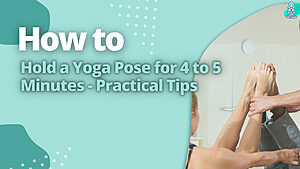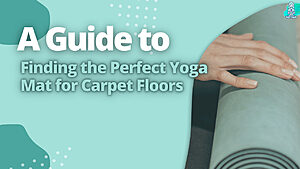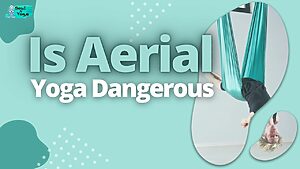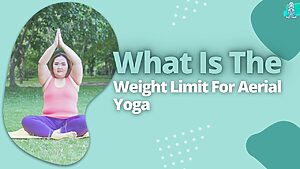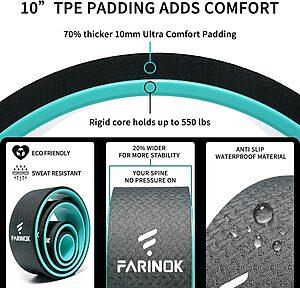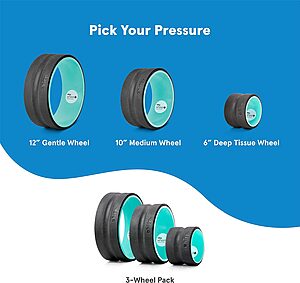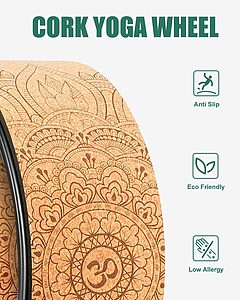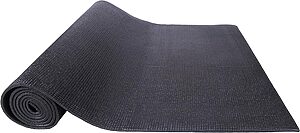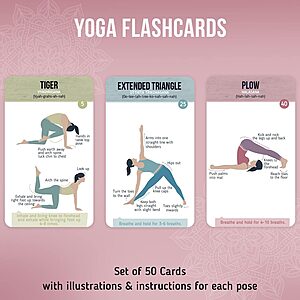There are a lot of factors to consider when purchasing a yoga mat, but one of the most important is thickness. So, should you buy a thick yoga mat?
If you are a beginner or if you have sensitive knees or joints, a thicker mat can be an excellent choice for you. A thicker mat will provide more cushioning and support.
However, if you are an experienced yogi who prefers a more challenging practice, then a thinner mat might be better for you.
I’ll go through the advantages and disadvantages of thick yoga mats in this article so you can decide which kind of mat is best for you.
Key Takeaways
- Yoga mats come in a variety of thicknesses, from thin to thick.
- The thickness of a yoga mat is not necessarily an indication of its quality.
- Some people prefer thicker yoga mats for extra cushioning, while others find them too bulky and prefer thinner mats.
- Ultimately, the thickness of a yoga mat is a matter of personal preference.
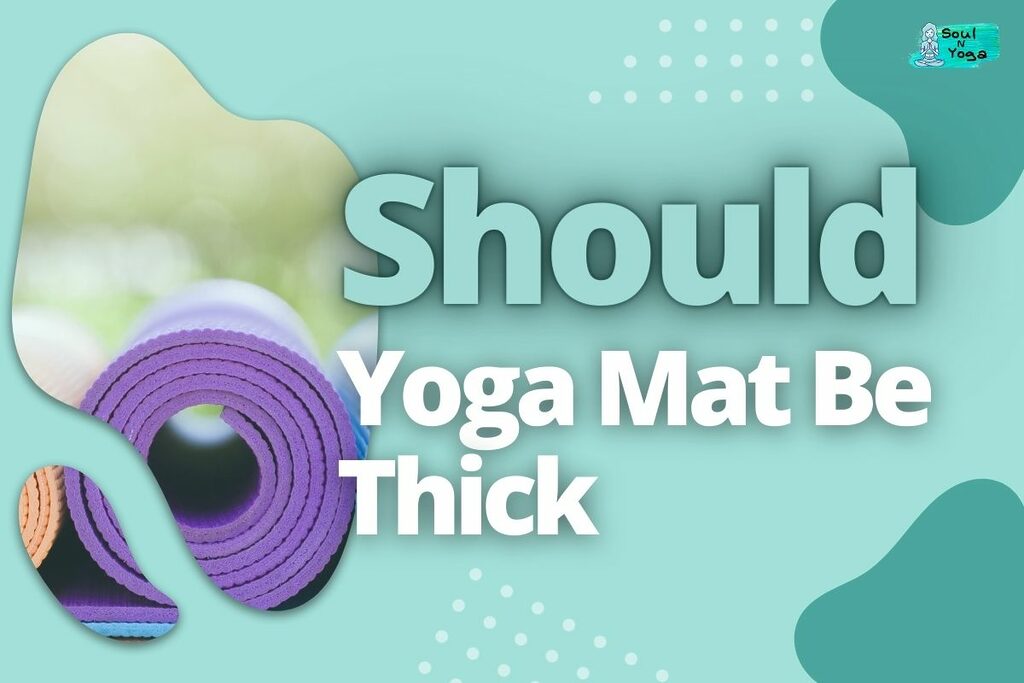
Here’s The Answer To Should Yoga Mat Be Thick
A thicker yoga mat will provide more cushioning and support, while a thinner yoga mat will be more lightweight and easier to transport. So what is the perfect yoga mat thickness?
When choosing the thickness of your yoga mat, there are a few factors to take into account.
- The type of yoga you will be doing. If you practice hot yoga or vinyasa flow, you may want a thicker mat to prevent slipping and provide extra padding. However, if you practice restorative or hatha yoga, a thinner mat may be preferable as it will be easier to grip the floor.
- The material of your yoga mat. Natural rubber and jute mats are thicker than PVC mats, for example. Cork mats are a sturdy, long-lasting solution if you’re seeking something green.
- Where you will be using your yoga mat, if you plan on traveling with your mat, choose a lighter-weight option that can easily fit in your suitcase. If you have limited space at home or in your office, look for a foldable or roll-up mat that won’t take up too much space when not in use.
Yoga Mats Should Be Thick Enough To Provide Cushioning And Support
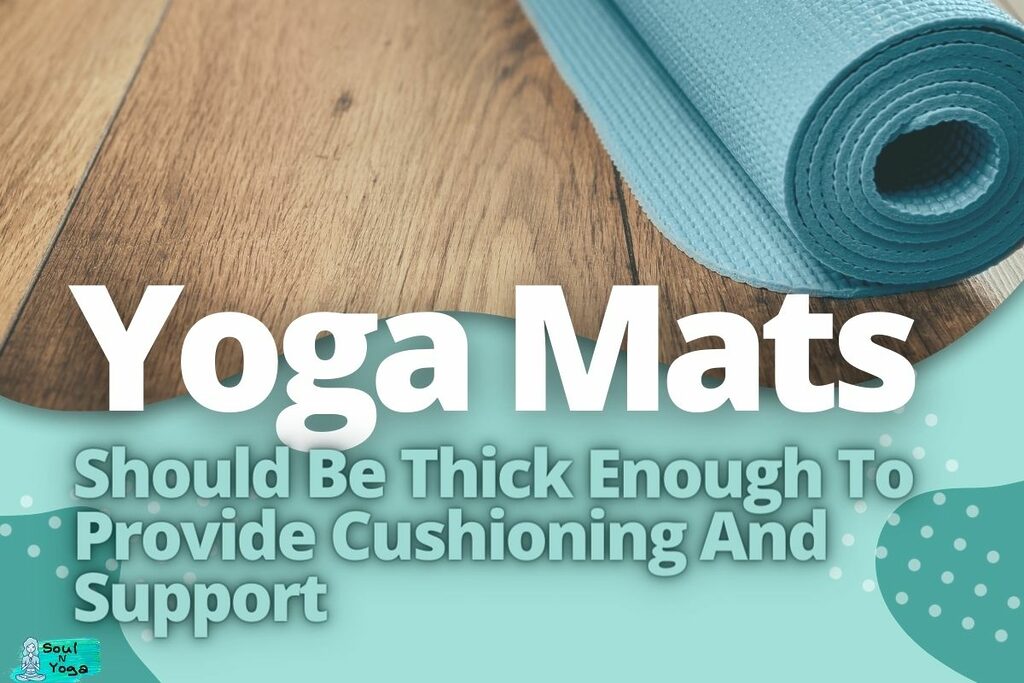
The thickness of your yoga mat is important. If it is too thin, you may feel like you’re not getting enough cushioning from the floor, which can lead to injury. On the other hand, if it is too thick or soft for your liking, it could interfere with balance and stability.
Thicker mats provide more support and stability in general, but they also require more balance and effort on the part of the practitioner in order to maintain control over their bodies during poses that require some form of intense concentration (such as Warrior III).
This can pose a problem for beginners who are not yet comfortable balancing themselves on their own two feet without falling over. And as we all know, falling flat on one’s face during an exercise routine isn’t exactly ideal.
If this sounds like something that might happen to you when using a thicker mat than what’s recommended by your instructor or guru (yes, I just said guru), then perhaps investing in a slightly thinner model would be worth considering instead.
A Thicker Yoga Mat May Be More Comfortable For Certain People
I’ll make it simple. If you have any joint pain or sensitive knees, a thicker yoga mat will be more comfortable for you. The mat will offer greater cushioning the thicker it is.
- This is crucial for those with sensitive knees, which can experience discomfort while beginning to do yoga poses on a hard surface.
- In addition to being more comfortable, thicker mats also make it easier to get into certain poses because of their thickness and stability.
For example, if you have difficulty lifting your legs up in a downward-facing dog (as an example), then a thicker mat will provide better support than a thin one would so that you can achieve this pose without worrying about where your feet are going to land when they come back down.
Choose A Yoga Mat Based On The Type Of Yoga You Practice
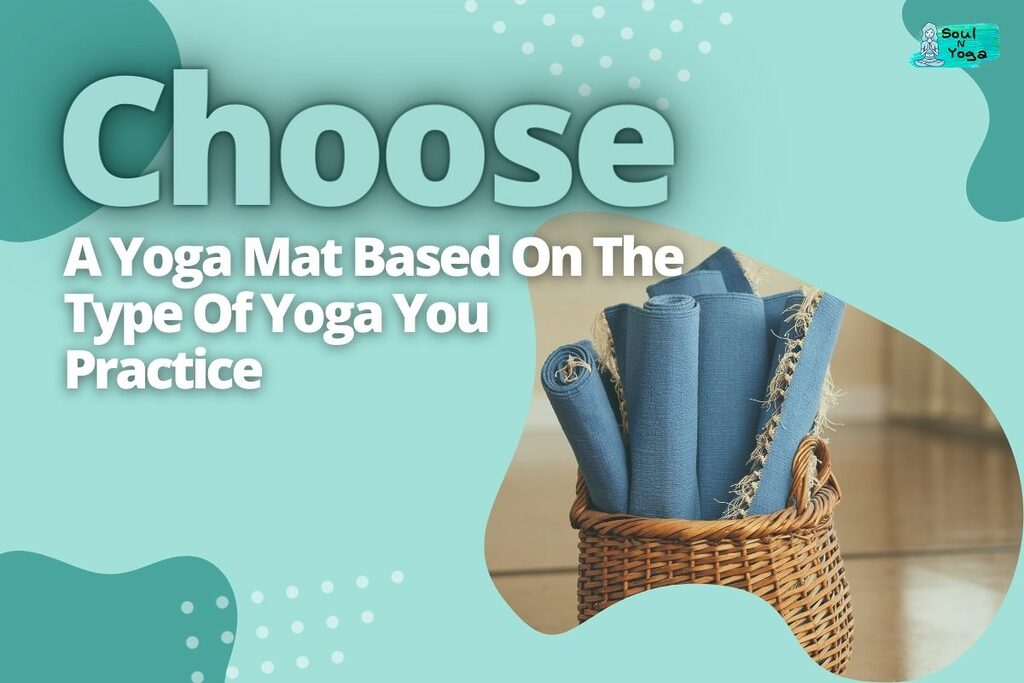
Finding the ideal yoga mat might be difficult. Not all mats are created equally, and it’s important to choose one based on your individual preferences.
The fact that there isn’t a single “optimal” thickness for yoga mats may surprise you; instead, choosing a thick or thin yoga mat is largely a personal preference.
Thickness affects comfort and stability when practicing certain poses. If you prefer to do standing poses or downward-facing dogs, then a thicker mat will provide more cushioning and stability underneath your feet without sacrificing the flexibility of movement during the class.
However, if you tend towards backbends or other seated postures, then a thinner mat will have less bulk underfoot that could interfere with proper alignment in these poses.
Consider Your Budget When Selecting A Yoga Mat
The cost of yoga mats varies greatly depending on their thickness, material type, and other factors. Some inexpensive options are made from synthetic materials that can wear out quickly, while more expensive options will last much longer with proper care.
- Consider how often you plan on using your mat before deciding what kind of quality is worth paying for.
- If cost is an issue (which, at times, it may be), then consider looking up reviews online and comparing prices between different brands before making a purchase decision.
- It’s also important not just price but value: many people choose cheap mats because they think they’re getting good deals—but this isn’t always the case.
You should look into the quality of each product so that nothing but top-notch materials are used when creating these items.
Why Is A Yoga Mat Thickness Important?
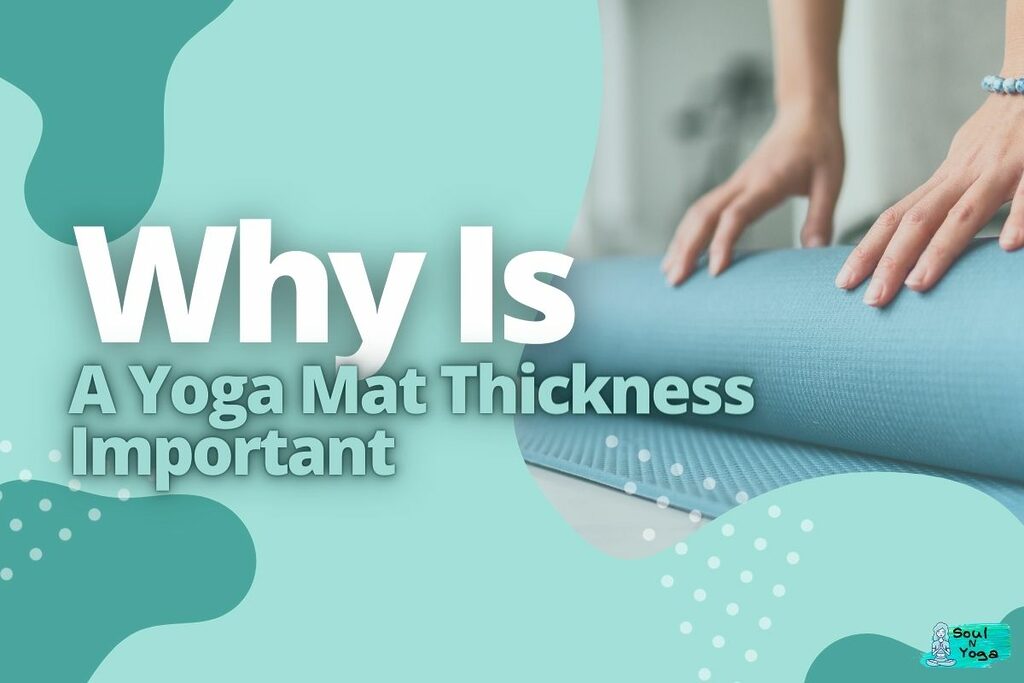
Should your yoga mat be thick? It turns out that the reply is, in fact, yes! There are several reasons why the thickness of your yoga mat matters:
- Thickness affects comfort. A thicker mat will provide more padding for your hands and knees during poses like downward dog or warrior two. If your practice involves holding these poses for an extended period of time, this can be very helpful in preventing pain and discomfort in the joints.
- Thickness affects stability. One of the great things about Pilates is that it teaches you how to engage the core muscles while doing exercises that look quite different from conventional crunches or sit-ups (think plank pose). When performing this type of exercise on a thin mat, it can be difficult to strike the ideal balance of flexibility and stability; if you’re not careful, you could end up losing control quickly. A thick mat provides a better grip, which helps increase stability during these types of movements so that even novice practitioners can get them down safely without fear of falling off their mats.
How Does Yoga Mat Thickness Affect Practice?
A thicker mat will provide more cushioning, while a thinner mat will be more supportive. The mat’s substance is the second element to take into account. Some mats are made from natural materials, while others are made from synthetic materials.
The third thing to consider is the stickiness of the mat. A sticky mat will provide more traction, while a non-stick mat will be more slippery.
There are some disadvantages to using a thicker yoga mat. First, they can be difficult to travel with because they’re bulky and heavy. Second, they can be challenging to clean because they’re absorbent and tend to hold onto dirt and bacteria.
Third, they can be less eco-friendly because they’re usually made from synthetic materials like vinyl or PVC.
What Are The Benefits Of A Thicker Yoga Mat?
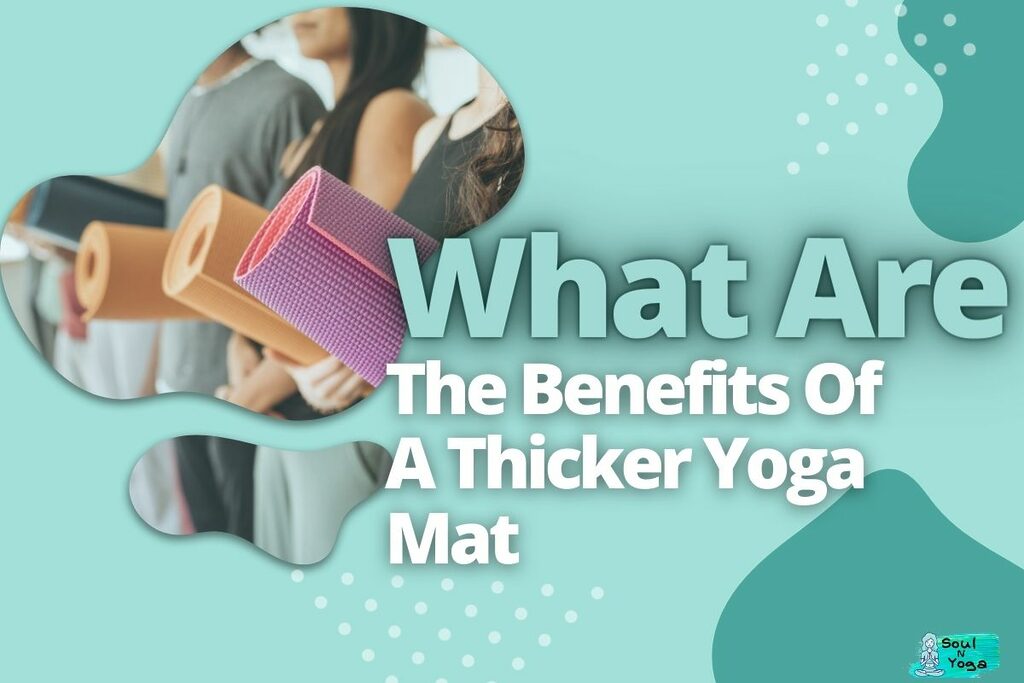
For example, people with joint pain or sensitive knees can find the extra cushioning and support provided by thick yoga mats helpful. In addition, thicker mats provide a more stable surface to practice on.
The extra thickness helps you to maintain your balance and alignment during poses, which is especially important if you’re a beginner.
Another benefit of having a thicker mat is that it’s easier to clean. The smooth surface of thinner mats can be hard for some cleaners to reach into crevices or absorb moisture from sweat.
A new thick yoga mat solves all these problems because it has deeper grooves that allow for better absorption and sanitation of sweat as well as stains from previous uses (or if it has ever been used in any other environment).
Are There Any Downsides To Using A Thicker Yoga Mat?
A thick yoga mat will be heavier than a thin one. This can make it challenging to transport, especially if you’re taking your mat with you. However, there is a trade-off between portability and cushioning.
If you want to bring your yoga mat with you on the go, then perhaps a thinner option is worth considering. You also have to consider how heavy your other equipment is when deciding whether or not to get a thick yoga mat.
Some mats may not fit in your bag alongside other things like clothes and water bottles, so it’s important to check their size before making any purchases.
What Is The Optimal Thickness For A Yoga Mat?
The optimal thickness for a yoga mat depends on the style of yoga you practice. If you are practicing inversions and arm balances, you’ll need a thicker mat to cushion your body from the floor. For those who are practicing gentle flows and stretching, a thinner mat will suffice.
In general, most mats range from 0.5 inches thick to 1 inch thick. Yoga mats can be made of rubber or foam (and sometimes both), but rubber mats tend to be more durable than foam mats.
Rubber also offers greater traction on slippery floors such as wood or linoleum because it doesn’t have any give as foam does underfoot when you press into it with your feet during poses like Downward Dog or Chair Pose.
If this all sounds confusing, don’t worry. Most people end up choosing between two sizes: extra long (72″ +) vs. standard length (71″ – 71″) due largely because one being too long/short for their needs.
Conclusion
So, should the yoga mat be thick? There is no right or incorrect response; your personal tastes are all that matter. If you are looking for a mat that is light and easy to carry around, a thinner mat may be the way to go.
However, if you want something that is more comfortable and supportive, a thicker mat may be better suited for you.
Some people prefer thinner mats because they are lighter and easier to transport, while others find thicker mats more comfortable and supportive.
What works best for a particular person is ultimately up to that person to decide.
Frequently Asked Questions
Is a thicker yoga mat better for my joints?
A thicker yoga mat may offer more cushioning and support for your joints, but it is ultimately up to the individual to decide what thickness works best for them.
How can the thickness of a yoga mat affect my practice?
Thicker mats may offer more support and cushion for your joints, which can be beneficial if you have any joint issues.
Will a thicker yoga mat make me sweat more during my practice?
No, the thickness of your yoga mat will not affect how much you sweat during your practice.
Is it better to buy a new or used yoga mat that is thick?
There is no right or wrong answer, and it ultimately depends on your personal preference. A new thick yoga mat will give you a better grip, stability, and cushioning. However, it’s expensive to buy a new one, so some people prefer buying used.
My name is Mugen Seki, and I’m a painter and yoga enthusiast who is passionate about bringing together art and exercise in ways that help people connect with their inner selves. When I’m not painting, I’m practicing yoga. And when I’m not doing either of those things, I’m usually thinking about them.
- How to Hold a Yoga Pose for 4 to 5 Minutes – Practical Tips
- A Guide to Finding the Perfect Yoga Mat for Carpet Floors
- Can You Add Yoga To Fitbit Luxe (Unlock the Power)
- Can You Add Yoga To Garmin Vivoactive (Yoga On The Go)
- Is Aerial Yoga Dangerous (The Scary Truth)
- What Is The Weight Limit For Aerial Yoga (Exploring The Possibilities)


